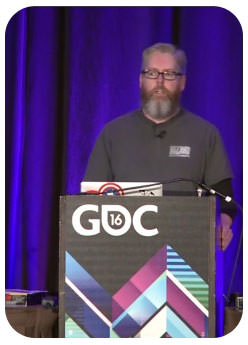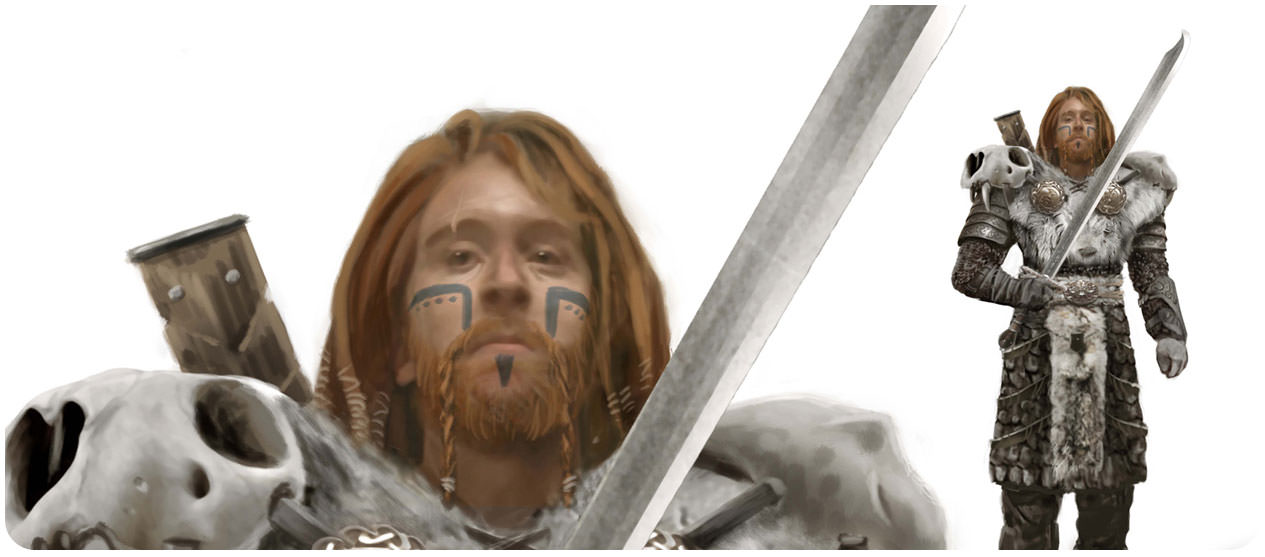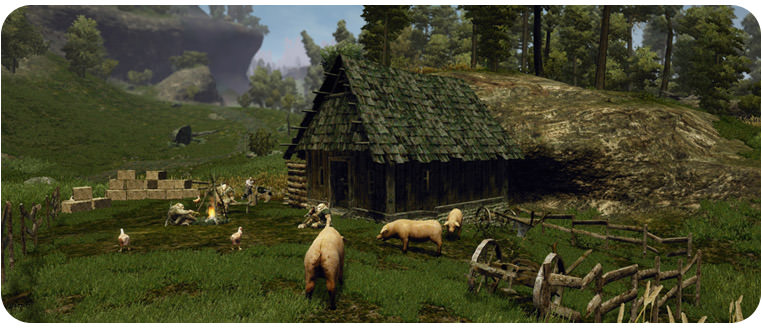What is silent post-mortem: the unknown story of the creation of Gothic 3

We all have our weaknesses that we can occasionally indulge in - the so-called “ guilty pleasures ”. I, for example, like to turn over old gaming magazines from time to time; among other things, they come across interesting interviews and developer diaries, leisurely covering the white spots of my ignorance (which, as expected, has no limits). With the post-mortems, the conversation is separate - they tell about the eternal, and therefore absolutely do not lose their charm.
 Take at least the post-mortem Portal , published in the January 2008 issue of Game Developer magazine . Thanks to him, many readers first learned about the favorite method of creating games within the walls of Valve ( yes, there was a time when Valve was still making games ): constant iterations of game mechanic prototypes and regular play tests with new players. Today this idea seems obvious to all of us - for the sake of justice, it was known even then, but not so widespread - despite the fact that it has already contributed to the appearance of games of the highest gameplay quality - one Half-Life 2 is worth it.
Take at least the post-mortem Portal , published in the January 2008 issue of Game Developer magazine . Thanks to him, many readers first learned about the favorite method of creating games within the walls of Valve ( yes, there was a time when Valve was still making games ): constant iterations of game mechanic prototypes and regular play tests with new players. Today this idea seems obvious to all of us - for the sake of justice, it was known even then, but not so widespread - despite the fact that it has already contributed to the appearance of games of the highest gameplay quality - one Half-Life 2 is worth it.Some more facts from the post-mortema Portal
It turns out that Portal itself was cut about twice in the end: due to the fact that unskilled players were given some levels of difficulty, developers regularly cleaned puzzles and replaced them with new ones. As Hammer’s regulars suggest, when prototyping levels, Valve uses orange primitives, not gray ones like everyone else - hence the process itself they call not “grayboxing”, but “orange boxing” (hence the “orange box”? .. )
Another post-mortem , and just one small (and incredible) detail: the design concepts of the main bosses in Diablo III were redone 50-60 times during the development. Now every time I remind myself of this fact, when hands begin to fall!
')
Of course, many well-known post-mortem games do not exist. Today, your attention is invited to the story about what in his postmortem no one in his right mind would tell.
History reference

Born in the West several decades ago, the post-mortema format in the context of game projects always carried two meanings. Firstly, in the post-mortems, the developers shared with the rest of the world their successful and not-so-great finds made during the work on the projects; secondly, such a retrospective was in fact one of the ways of promoting freshly eager games.
Appearing once on the pages of Game Developer magazine, such retrospectives eventually became the favorite reading of the audience and subsequently repeatedly appeared on its cover. When this edition left us untimely, Gamasutra picked up the fallen banner, which began as an online division of Game Developer itself, reprinted post-mortems from the magazine. (By the way, anyone can find and download the journal archive for free at the link )
 Today, Gamasutra developers still publish dozens of post-mortems per month, but, with rare exceptions, it’s usually not so interesting to read them (the reasons will be discussed below). On the other hand, GDC is becoming more active, where dozens of reports were held as part of the A Classic Game Postmortem series, including Sid Meier's talk about Civilization , Tim Caine about Fallout and David Breivik about Diablo .
Today, Gamasutra developers still publish dozens of post-mortems per month, but, with rare exceptions, it’s usually not so interesting to read them (the reasons will be discussed below). On the other hand, GDC is becoming more active, where dozens of reports were held as part of the A Classic Game Postmortem series, including Sid Meier's talk about Civilization , Tim Caine about Fallout and David Breivik about Diablo .If you are interested in the history of id software games, then poor DOOM and Quake also managed to rewind all the bones up and down. Do you really want to know more about them? Well, refer to the book by David Kushner “Masters of DOOM”, the “black book” of Wolfenstein 3D or, finally, to the original source (at your service - .plan files by John Carmack and a free interview collection in English ).
Before proceeding directly to our history, let us take a quick look at what is so good (and, what is to be confessed, often useless) post-mortems.
Attempt to deconstruct
Over the years, among the developers, a secret standard has been formed for the washing up of stones to "any child", which is about to come off the assembly line. The standard post-mortema format is extremely simple: what goals did the developers set for themselves, what could they achieve, transfer of three to five positive aspects of the project, transfer of 3-5 areas that would be worth improving.
Do not forget that the development of the game is an incredibly difficult task of creating software with no clear, objective goals (the game should be “fun”, fascinating! ) Within the limits of the most severe deadlines. I spotted this definition from Jeff Atwood, and it refers to the period of the 90s and 00s, when games were mostly written in C ++. (I do not know how fair it is to use it in the framework of projects of our contemporaries, but most of the famous post-mortems belong to this period.)
Therefore, in addition to useful ideas, post-mortems traditionally contain a list of minor technical “rakes” that developers faced when introducing new technologies in the shortest possible time; You can learn about non-working iterations of game design from years of familiar games and, if you're really lucky, come to a real delight from what you read / see.
Not surprisingly, years later, Gamasutra analyzed 155 post-mortems over several years in order to find out what the developers usually say in them. I will not retell here the results of their research, you can read about them here , another thing is important for us - the approximate content of an arbitrary post-mortema.
So, the typical post-mortem, which you have read in your life dozens of times, looks something like this:
| What was good | What was bad |
|---|---|
| Many ongoing development iterations | Iterations could be more |
| Experienced team | Creepy, impossible deadlines and planning |
| Early focus on creating tool tools | Project scale too large, impossibility to control |
| The right choice of scale of the project and confident control | Bad, uncomfortable and slow "tulza" |
| Partnership with a company that we like | Lack of experience among team members |
| Using feedback from players from the start | Problems hiring the "right" employees |
| Lack of marketing (indie post-mortems) |
For decades, the tacit principle of developers has been one and the same: “about new releases, either well or in no way” - it is simply not accepted to take the rubbish off the yard or write about real serious problems that have arisen on the project. Considering that, because of the NDA, the developers themselves sometimes do not always know the names of the projects they are working on ( hello, EA! ) - what stories can there be for the general public? From here we can conclude that the most interesting post-mortems in the world must be devoted either to games that have become real catastrophes or to projects that are commonly called “living classics”. They are the perfect generator of the most interesting stories in the world.
So, here to you, dear reader, the terrible truth has finally opened: the most interesting in the post-mortema usually does not fall. But sometimes , by the will of fate, we still manage once to find out about what was actually happening.
Gothic "Piranhas"

Most recently, the release of the new game studio Piranha Bytes - ELEH. Despite the fact that in the current Piranha almost no employee veteran remained, and in fact only the name remained from it, all the familiar advantages of the company's games were in place - many have already called the game the best studio game since Gothic 1 and Gothic 2. Surprisingly, the company's flaws were also reproduced with the utmost precision - the game has problems with control, combat system and animation, because of which the press only half a year ago predicted a game of total failure . Why so - it will become clear by the end of my story.
You can write a separate book about the creative way of the studio Piranha Bytes and her famous Gothic series. Only one attempt to figure out who and when hiding under this name, will take several pages. Of course, no one will do this - due to the fact that the founding fathers of the “same” Pirahna still jealously guard everything related to their offspring. God forbid, a rare alpha version of Gothic 1.5 or its screenshots will be found on your hard drive, and you will publicly admit this on the forum - gentlemen the right holders will shower you with “formidable” letters - and all this despite the fact that almost 20 years have passed since the cancellation of the project, which was to become Gothic 2 .
However, if ever such a book came to life, one chapter in it would certainly be worth devoting exclusively to the list of bugs of the third “Gothic”. Such a parade of bugs, as in Gothic 3 on the release, have never been seen anywhere else: the main character for no reason could grow a second head; the enemies tried to approach him exclusively one by one on a first-come, first-served basis; NPCs didn’t just walk through the air - they became bald, while their wigs “flew” after them or dangled under their feet; when trying to fight the enemy, the protagonist could easily get stuck in it, and the boars ...
The boars from Gothic 3 are forever in the heart of everyone who launched the game on release: worse than monsters from Silent Hill, more dangerous than the bosses in Bloodborne who can kill a hero with one light touch - they still have some nightmares; some players even wrote FAQ on boars from Gothic 3 . As I managed to find out, most likely the boars have become what they are, because of an error in the game design and the balance of the game:
“In the case of the boar, the reason lies in the miscalculation in terms of balance. The error was not in the damage figures, but in the complexity of the game. Unlike Skyrim, locations do not scale by difficulty level and have no minimum level restrictions. Boars should never have been an opponent that is easy to defeat - because the hero at the beginning of the game grows very quickly and fighting them is no longer difficult. Therefore, the boars, which the player already meets in the starting location, it was decided to do high damage and a lot of HP . Alas, at the same time, someone obviously was not very quick-witted when he thought of adding speed to them (you cannot run a safe distance from the boar) and a charged attack (the problem is not so much high damage as in a critical hit). As a result, we get the famous boar vanshot. "
It would not be an exaggeration to say that the game became the most buggy release of 2006 - I don’t even want to recall all the other bugs. In its background, the modern problems of animation Mass Effect Andromeda seem a trifle on which no one would have focused.
Loyal fans and other players were in real shock and could not understand - what happened to the company that once made great games?
Judging by the fact that over the past ten years Pirahna Bytes itself has shared with the players only a minimum of details about the most dramatic page of its history, we have zero chances for a complete and plausible retrospective. What to do, dear reader, we will figure it out on our own, this is not the first time for us.
Passion on the engine
Insiders claim that the cause of what happened with the game was the actions of the publisher, more specifically, the wrong management.
Many players in 2006 compared Gothic 3 with The Elder Scrolls: Oblivion . In fact, this comparison was alien to the authors themselves; they opposed their game to the previous Bethesda masterpiece — Morrowind . I think you yourself understand that, in fact, the resources of German developers were only a small fraction of what was controlled by Bethesda; but in Morrowind everything was done manually, including the design of the dungeons, from which the company gradually moved towards modular design and procedural generation, thanks to which Bethesda significantly reduced the time and resources needed to create new locations - which means it had to be no worse and in Gothic. Otherwise, according to the publisher, no one would be interested in the game. And what kind of HYIP lives without loud PR promises? ..
By signing a contract for the development and publication of the game, the developers received money to develop the game, after which they had no choice but to fulfill all the promises of the publisher. Need a huge open world? Get it and sign it - you are waiting for as much as 75 square kilometers! However, it was not so easy to implement all the ideas of marketers - and this particular promise, perhaps, harmed the project the most.

As it will be known later, thanks to repeated testimony from insiders, the root of evil in technical terms was the repeated change of the engine. Fans of the series know that the very first screenshots of Gothic 3 were made on the Gamebryo engine - the one that beats in the heart of Gothic's natural enemy - Morrowind - even if in a strongly modified form. The screenshots made on Gamebryo are easy to determine - the wild orcs look on them in a completely different way than in the final version. Details of the reasons for refusal of Gamebryo we do not know. The developers claimed in an interview that it was their desire to make an open world without loadings, and not a single engine at the time could cope with this task.
The Piranha Bytes team has always been and remains extremely compact - at the time of the development of Gothic 3, it did not exceed 17 people. So, Piranha programmers decided to urgently create a new engine, called the Genome Engine, which - alas! - really managed to bring to life only six months after the release of the game. Everyone knows that the programmers of Piranha Bytes never shunned mass cycling, so with the exception of PhysX, Speedtree and Emotion FX, everything else was thrown out and written from scratch - while the developers were guided by the engine used in the first two “Gothics” and written by them themselves (however, if I remember correctly, the main ideologue of its creation by that time had already left the company). There is a version that the developers continued to use Gamebryo until they could not transfer to the Genome Engine, and for a while there were two versions of the game.
The resulting engine was really impressive at that time. The objects looked pretty well detailed, because in terms of textures, the engine supported specular maps and normal maps, and the number of polygons per character (along with armor) was just over 6000. The engine supported LODs, and The lighting was used outdated - the issue of switching to DirectX 10 was not considered. Getting rid of loading screens between locations was helped by loading meshes, textures and locations in the background - the standard approach used today; However, this had a negative effect on the performance of the game on single-core processors: in addition to the standard streams for processing physics and sound, the developers brought two more - under the load of resources and static geometry. For a normal game in Gothic 3, you needed at least a dual-core processor - otherwise you lost 30% of the performance.
Who would have thought that here, too, an unpleasant surprise awaited the developers? ..
“Any information about the game could come to the press only from the publisher’s PR department. Every few months, the bell rang from there, and our boss was asked to report on the development progress. You should have seen how he turned pale with fear every time! A month before the release, it was obvious that we did not have time - the game had already gone gold, and we urgently made the first patch ... What can I say, because of the developers' attempts to shove a whole huge open world into a small amount of RAM , even “saves” were loaded for 10-15 minutes. "
If in 2004, the developers of Gothic saw that by the time the game was released, the players' computers would have at least twice as much “RAM” installed as it turned out in the fall of 2006. All demo versions in 2006, which were brought to the exhibitions, actually contained only a small part of the world from the final game and were shown on computers with 4 GB of RAM; the developers themselves assured that the game should work fine on 2 GB, but the players had only 1-2 GB of RAM installed, but in fact even less. It is not difficult to guess what it led to ...
Sounds realistic, right? Alas, I failed to confirm this beautiful hypothesis.
In fact, for testing Gothic 3, the publisher Jowood organized a special “daughter” in Romania (why in Romania? To save money), which was led by a former tester SpellForce and recruited from random students. For at least 4-5 months before the release, they were regularly sent game builds - and Gothic 3 was tested not only on top, but also on weak PC configurations. Ordinary "Crashes" Another thing is that two months out of these six went exclusively to polishing to the brilliance of that part of the game that they drove through all the conferences.
Nevertheless, the commentary that one of the leading employees of Piranha Bytes gave while working on Risen is suggestive:
“When it comes to figures describing the technical characteristics of a future game, it’s worth making conservative decisions when planning them - less likely that in the end it will“ kill ”the performance of the game. Doubling the number of polygons every two years is basically normal, but do not go crazy about this. ”
Surprisingly, this risky investment has probably already justified itself long ago: a modified version of the Genome Engine still beats in the heart of Piranha games, enlivening Risen and ELEX .
Further evolution of engines developed by Piranha Bytes
You can read about it by reference , but look at both - the information in that article is written from official sources and interviews, so it may not be true.
Crunchy
There is one “motivating” phrase that sounded from the publisher on a regular basis and during the course of development managed to get bored by everyone:
"How many things are there in Morrowind ?" Only 500? We will have 900 in the third Gothic! ”
 Of course, there was no time to produce objects and how to fill the game world properly either. Separate settlements of the third "Gothic" - those are still Potemkin villages, built by the method of copy-paste - some of which were inhabited exclusively by males. Alas, there was no time left to fix all this.
Of course, there was no time to produce objects and how to fill the game world properly either. Separate settlements of the third "Gothic" - those are still Potemkin villages, built by the method of copy-paste - some of which were inhabited exclusively by males. Alas, there was no time left to fix all this.In recent weeks, before the release, the life of the developers was completely unbearable: people worked for 48 hours, went home for a few hours to sleep, and then went back to work. Some programmers and designers slept right in the office on the couch, around the perimeter were boxes of food ...
However, not everyone had to work hard:
Testing Gothic 3 ? Yes, throw, new assemblies were sent infrequently. Usually people came to work and played all day in WoW , especially since none of them had a specialized education and there was little use of their work.
If in June 2006 the game was in “alpha”, then in the middle of October its European release took place (the international release happened in November - by this moment the first patch was already ready, correcting a huge number of flaws).
For the reasons mentioned, it was simply impossible to have time to do everything as it should have been set by the release date set by the publisher. But the game's publisher, Jowood, could not postpone further the release of the game. Under no circumstances - after all, they already once gave the developers a respite despite their own deplorable state. If the release of the game had been rescheduled, Jowood would not have suffered this (the mental health of the players, please note, no one even thought about it).
However, we will not discount the inherent shortcomings of the series - poor animation and control, as a result - a controversial combat system (in the case of Gothic 3, it was completely reworked in patches). So hanging everything on the publisher would be a mistake.
Budget and sales

As a result, Jowood's financial expectations were fully justified - the game sold out in excellent circulation in North America and Germany. In Germany, the positions of the Gothic series have always been extremely strong - there the fans of the game still celebrate their annual “Gothic Day”.
The game was released in Europe in October 2006; by November, 350,000 copies had been sold, and by March 2007, the game had sold 500,000 copies (at least, these figures were reported by Jowood - but the American partner publisher was extremely satisfied with how the third Gothica was sold). Agree, these are impressive results!
However, official data do not take into account one important detail, about which no one knows:
Yes, the sales of the game were excellent, but the number of refands just went off scale. The impression was created that the reason for the development of the patches was that Jowood covered the game with the cancellation of the pre-orders of the game that had not yet been released, and if it were not for them, it would have remained in that deplorable state.
According to independent estimates, the entire project took 3.5 years, no more than 17 people worked on it, the game budget was 5-6 million euros. But with budgets in the case of " Gothic " is not so simple. The first game of the series cost several million in production and beat off only a part of them, the second one brought the series to zero, and only starting from the Crow's Night addon, did Gothic bring money to its creators - this information was revealed to Pirahna Bytes in one of the interviews .
For comparison, here are the indicators of the modern game in the genre of open world, Horizon: Zero Dawn . Its development took more than 6 years, of which 3 years was only pre-production: game design, prototyping and sketches of game locations; during the production of the game, the project team reached a peak of 250 employees (not counting about 100 outsourcers from China); The total production cost of the game was about € 45 million.
Epilogue
I think you might have a question - why then are the players so much in love with the Gothic games? I already know about the answer: it's all about those who made these games! They were one of the most active gamers among all that I have ever met, and their sphere of interests almost entirely consisted of RPG games. Without blinking, they are still able to remember which builds in Diablo II and Neverwinter Nights were the best; they know by heart the Heroes of Might & Magic and continue to admire the skill of the script writers of Baldur's Gate ... True, it’s not surprising that they treat skeptically almost all modern mainstream games - with rare exceptions, like Guild Wars 2 , Shadowrun Returns and Divinity: Original Sin 2
After the release, the developers even apologized at one of the fan forums for unfulfilled promises and technical problems that players encountered, promising to fix them in patches. By the way, they fulfilled promises.
Alas, among the management Jowood was full of those who did not play games at all.
After a few patches and bringing the game to a playable state, in May 2007, Pirahna Bytes decided to leave the Jowood wing. As the head of the studio notes in an interview years later, “the choice before which they put us in Jowood resembled a pistol attached to a temple”. Their place was taken by a team of enthusiasts: at one time on the Jowood website, anyone could sign an NDA and get access to the source code of the game in order to fix its bugs and write patches. This team released a few more official patches for the game and later developed an addon for it.
The fourth part of Gothic , called Arcania , was done under the flag of Jowood by completely different people - Spellbound Entertainment, the authors of the fairly well-known Desperados series, the original and high-quality clone Commandos in the decorations of the Wild West; they still continue to work on games, only now under the sign of Black Forest Games.
How did it all end for Jowood? Thanks to the release of Gothic 3 in time, she was able to stay afloat for several more years, but she did not manage to escape.In 2010, the company declared itself bankrupt and sold most of its intellectual property to Nordic Games.
By the way, the rights to publish new parts of Gothic belong to Piranha itself - only the studio over the years has repeatedly repeated that it is not going to return to Gothic , at least not in the foreseeable future. Why?According to the developers, the players' expectations are too high, and therefore, in order to satisfy everyone, the game must be something much bigger - a real hit, and they still have no ideas about it. Let's take a word? ..
PS

Under the roof of the German publisher Jowood there were many other well-known "franchises" - for example, the game series SpellForce. It is difficult for me to estimate the scale of popularity of the original game in the CIS and even more so - its sequel; but I remember very well that when its continuation came out in 2006 - the SpellForce 2 game - it looked, to put it mildly, not at all like the screenshots a year ago ...
Ten years later, a casual acquaintance finally put everything in its place:
“SpellForce 2? Oh, I remember how we selected screenshots for her! It was like this ... It was necessary to urgently make some screenshots for marketing and promotional materials. The game itself at that time did not work very well and looked so-so, so I had to make about 1000 screenshots, and from all their diversity I could only choose either 3, or 5 pieces. So you say you liked the screenshots? .. "
Hopefully, now you are sure that not all post-mortems are boring and useless.
Materials for this article were collected over two years. During the collection of information and the writing of the article, no direct participant in the events from the recto-thermal cryptanalysis was injured. Have a great Friday and weekend!
Source: https://habr.com/ru/post/341462/
All Articles